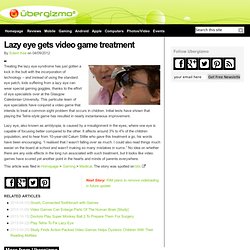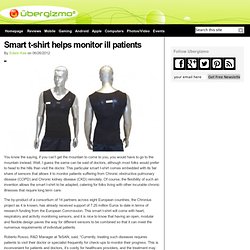

FDA Approves the First Smart Pills That Track When You've Taken Your Meds. Learn Science While Playing Video Games? Video Game Maker Valve Makes Dreams Comes True. Valve is bridging the gap between video games and science education with its 'Teach With Portals' program. For decades, video games and education have gone together like oil and water. No matter what attempts were made to merge the two, it seems students and teachers had to pick between one or the other, with The Oregon Trail being the only tolerated exception to the rule.
But a growing number of educators have become open and eager to use video games in the classroom, especially when it comes to teaching STEM (science, technology, engineering, and mathematics). Now, a video game developer has stepped up to attempt the seemingly impossible: convert a popular video game into a modern educational platform. Valve recently launched a free initiative called Teach With Portals that aims to help teachers use the game Portal 2 (click here for a review) to engage students in learning STEM and critical thinking. Lazy eye gets video game treatment. Treating the lazy eye syndrome has just gotten a kick in the butt with the incorporation of technology – and instead of using the standard eye patch, kids suffering from a lazy eye can wear special gaming goggles, thanks to the effort of eye specialists over at the Glasgow Caledonian University.

This particular team of eye specialists have conjured a video game that intends to treat a common sight problem that occurs in children. Initial tests have shown that playing the Tetris-style game has resulted in nearly instantaneous improvement. Mobile Music Touch wireless musical glove helps improve sensation and motor skills.
Researchers over at Georgia Tech have come up with a wireless, musical glove which is said to be able to improve sensation and motor skills for those who have some form of paralyzing spinal cord injury (SCI). Originally, it was tested successfully by those who have limited feeling or movement in their hands because of tetraplegia. Smart t-shirt helps monitor ill patients. You know the saying, if you can’t get the mountain to come to you, you would have to go to the mountain instead.

Well, I guess the same can be said of doctors, although most folks would prefer to head to the hills than visit the doctor. This particular smart t-shirt comes embedded with its fair share of sensors that allows it to monitor patients suffering from Chronic obstructive pulmonary disease (COPD) and Chronic kidney disease (CKD) remotely. Of course, the flexibility of such an invention allows the smart t-shirt to be adapted, catering for folks living with other incurable chronic illnesses that require long term care. The by-product of a consortium of 14 partners across eight European countries, the Chronius project as it is known, has already received support of 7.25 million Euros to date in terms of research funding from the European Commission. Laser knows just how much vegetables you have eaten.
Popeye the Sailorman cannot stress enough just how important it is to have your fair share of vegetables in your diet, and exasperated parents over the years did try different methods in making vegetables more appealing, but seemingly to no avail.

Here is a tool from the researchers at Yale University and the University of Utah who might help parents monitor the amount of vegetable intake in their scions. Cel-Factor technology claims to protect humans from EMF radiation. By Gene Ryan Briones on 05/17/2012 At the CTIA Wireless event last week, bio-resonance technology company von Hoffmann & Partner Technologies together with CeL-Factor introduced its new line of EMF radiation protection devices.

The CeL-Factor technology uses its own Energetic Quanta Cymatics Communication Technology (EQCCT) to protect wireless device users from absorbing the effects of EMF radiation. The company claims that its technology will help mobile users in two ways: keep a person’s head temperature cooler when using a cell phone, and keep a cell phone user’s blood in a normal state (note that this has not been proven yet). von Hoffmann and Partner Technologies reportedly participated in a comprehensive study conducted at the world renowned Jasper Clinical Research and Development to determine its effectiveness in diminishing the harmful effects of EMF radiation.
DARPA implants keep stress levels in check. We live in an extremely stressful society these days, as everything needs to be instant, and to deliver less than expected is deemed by some to be a major failure. Well, the Department of Defense’s research agency is looking out for a new kind of body sensors, that when implanted into their soldiers, such sensors are capable of checking out the stress level of that particular person at all times. I can just imagine how the future would be like if this goes through – all soldiers might end up having a longer lifespan if these sensors are smart enough to catch different diseases at their earliest (and hence, most treatable) stage. Sony patent reveals plans for wireless medical wristband. The Aid cane provides constant monitoring of the user’s health.
Not all elderly folks are blessed with the ability to be able to walk about the house or outside without the need for a cane or some form of support.

However, for those who do require a cane in order to go about their daily lives, Lithuanian designer Egle Ugintaite has come up with a cane known as The Aid, which provides more than just support for walking. The cane was actually the grand prize winner in Fujitsu’s 2011 design award, and apart from just providing support during walking, the cane will also monitors the user’s pulse, blood pressure and body temperature. SPARX video game treats depression in youngsters. Now this is definitely an idea worth exploring – researchers who hail from the University of Auckland in New Zealand recently published potentially promising results that saw the use of the specially designed SPARX video game to treat depression in teenage kids, where the effectiveness of the video game treatment was said to be as effective as traditional face-to-face counseling.

What does SPARX do to be on par with the standard shrink? Well, this game will guide players through a number of challenges which will hopefully help youth practice handling different life situations and emotions which are associated with such situations. ArmAssist uses video games used to heal stroke victims. BrainTap wearable gaming glove targets arthritis patients. Exercise is not only limited to the physical realm, as the mind too, needs some exercise.

After all, some say that our brain is a muscle, and it too, needs to be worked. After all, getting the right kind as well as amount of exercise is important to make sure you remain healthy for your age, and hand exercises do come in handy for those who suffer from rheumatoid arthritis, as it ensures that joints remain flexible and strong while memory exercises help the elderly remain mentally fit.
Enter BrainTap, where it is a device developed by a team that comprised of Andrew Huynh, Adrian Abele, Mason Shao, Jayson Fong and James Taylor.